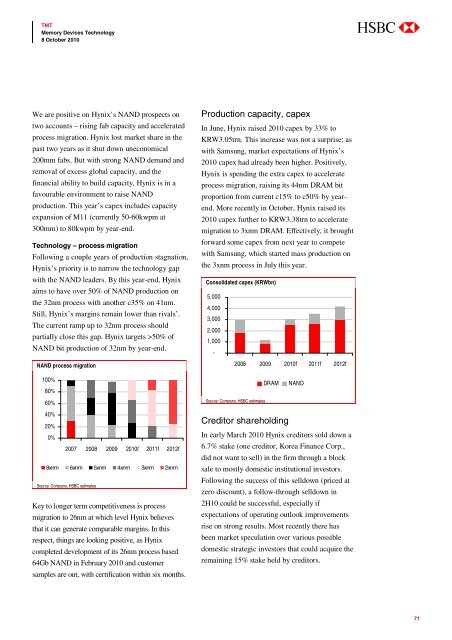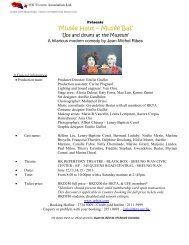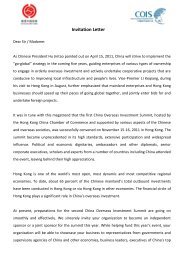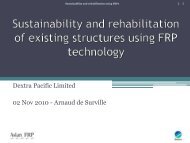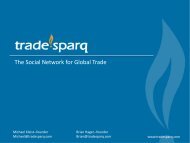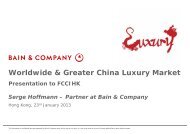You also want an ePaper? Increase the reach of your titles
YUMPU automatically turns print PDFs into web optimized ePapers that Google loves.
TMT<br />
<strong>Memory</strong> Devices Technology<br />
8 October 2010<br />
abc<br />
We are positive on Hynix’s NAND prospects on<br />
two accounts – rising fab capacity and accelerated<br />
process migration. Hynix lost market share in the<br />
past two years as it shut down uneconomical<br />
200mm fabs. But with strong NAND demand and<br />
removal of excess global capacity, and the<br />
financial ability to build capacity, Hynix is in a<br />
favourable environment to raise NAND<br />
production. This year’s capex includes capacity<br />
expansion of M11 (currently 50-60kwpm at<br />
300mm) to 80kwpm by year-end.<br />
Technology – process migration<br />
Following a couple years of production stagnation,<br />
Hynix’s priority is to narrow the technology gap<br />
with the NAND leaders. By this year-end, Hynix<br />
aims to have over 50% of NAND production on<br />
the 32nm process with another c35% on 41nm.<br />
Still, Hynix’s margins remain lower than rivals’.<br />
The current ramp up to 32nm process should<br />
partially close this gap. Hynix targets >50% of<br />
NAND bit production of 32nm by year-end.<br />
NAND process migration<br />
Production capacity, capex<br />
In June, Hynix raised 2010 capex by 33% to<br />
KRW3.05trn. This increase was not a surprise; as<br />
with Samsung, market expectations of Hynix’s<br />
2010 capex had already been higher. Positively,<br />
Hynix is spending the extra capex to accelerate<br />
process migration, raising its 44nm DRAM bit<br />
proportion from current c15% to c50% by yearend.<br />
More recently in October, Hynix raised its<br />
2010 capex further to KRW3.38trn to accelerate<br />
migration to 3xnm DRAM. Effectively, it brought<br />
forward some capex from next year to compete<br />
with Samsung, which started mass production on<br />
the 3xnm process in July this year.<br />
Consolidated capex (KRWbn)<br />
5,000<br />
4,000<br />
3,000<br />
2,000<br />
1,000<br />
-<br />
2008 2009 2010f 2011f 2012f<br />
100%<br />
80%<br />
60%<br />
Source: Company, HSBC estimates<br />
DRAM<br />
NAND<br />
40%<br />
20%<br />
0%<br />
2007 2008 2009 2010f 2011f 2012f<br />
8xnm 6xnm 5xnm 4xnm 3xnm 2xnm<br />
Source: Company, HSBC estimates<br />
Key to longer term competitiveness is process<br />
migration to 26nm at which level Hynix believes<br />
that it can generate comparable margins. In this<br />
respect, things are looking positive, as Hynix<br />
completed development of its 26nm process based<br />
64Gb NAND in February 2010 and customer<br />
samples are out, with certification within six months.<br />
Creditor shareholding<br />
In early March 2010 Hynix creditors sold down a<br />
6.7% stake (one creditor, Korea Finance Corp.,<br />
did not want to sell) in the firm through a block<br />
sale to mostly domestic institutional investors.<br />
Following the success of this selldown (priced at<br />
zero discount), a follow-through selldown in<br />
2H10 could be successful, especially if<br />
expectations of operating outlook improvements<br />
rise on strong results. Most recently there has<br />
been market speculation over various possible<br />
domestic strategic investors that could acquire the<br />
remaining 15% stake held by creditors.<br />
71


